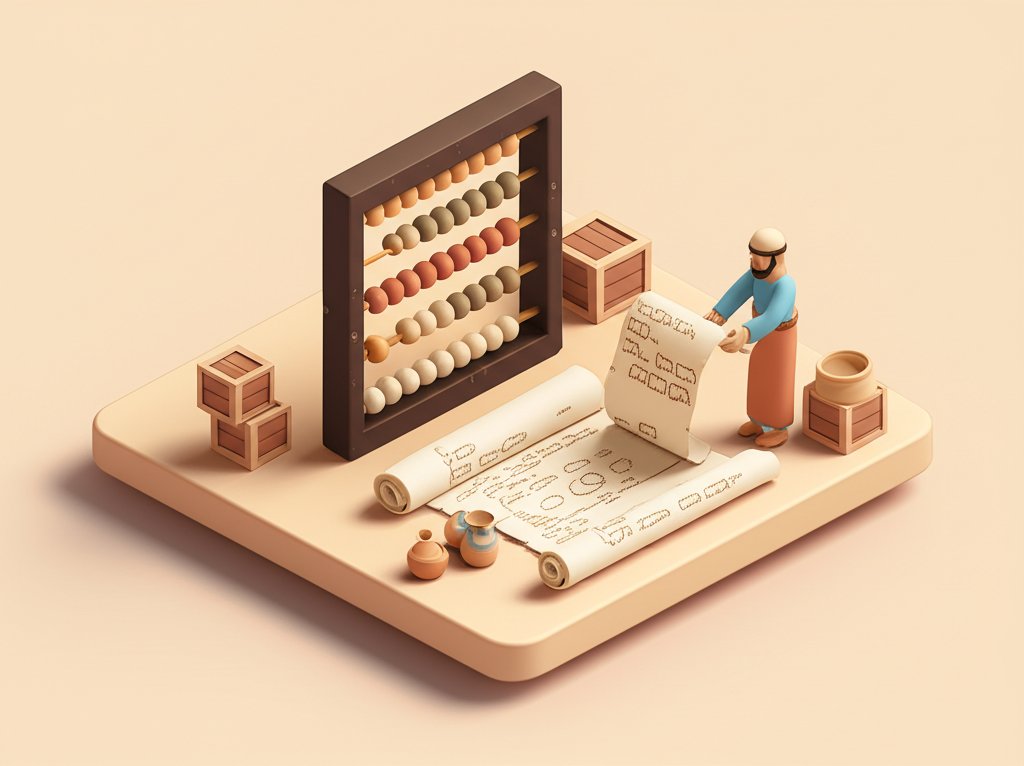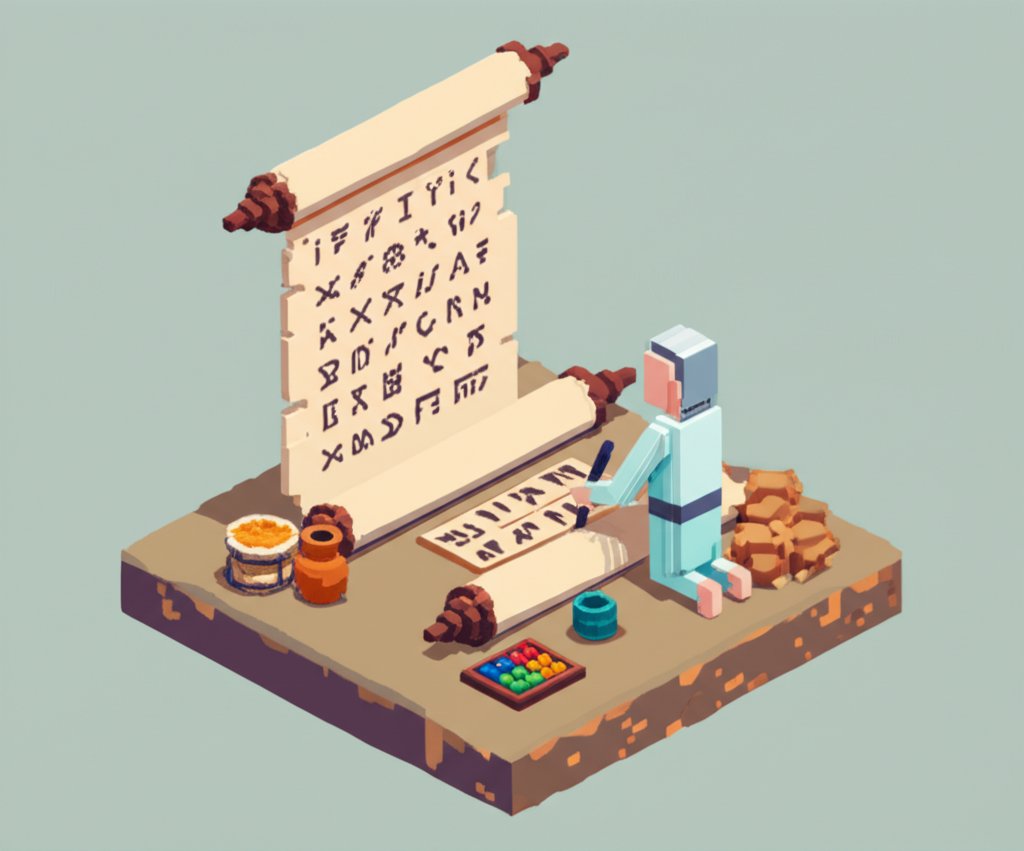The intricate dance of numbers and ledgers, the backbone of every thriving enterprise and the silent language of progress, has a story far richer and more ancient than many realize. To truly understand its profound impact on civilization, we must delve into the origin of accounting, tracing its evolution from rudimentary markings on clay tablets to the sophisticated digital systems that power our global economy today. This journey isn’t just a record of financial practices; it’s a compelling narrative woven through the very fabric of human progress, consistently responding to, and often driving, economic, societal, and technological shifts across millennia.
From the earliest human settlements needing to track grain and livestock to the complex multinational corporations of the 21st century, accounting has served as an indispensable tool for commerce and governance. This article will unravel the captivating origin of accounting, exploring where did accounting start, charting the pivotal milestones, and celebrating the ingenuity that transformed scattered records into a precise science. Prepare for a comprehensive summary of history of accounting, moving from ancient clay to modern code, and discover how this fundamental discipline shaped the world as we know it.
The Dawn of Civilization: Where Did Accounting Start?

To pinpoint where did accounting start, we must travel back to the dawn of civilization itself, long before the concepts of currency or formal mathematics, and even before widespread written language. The fundamental need to record possessions, transactions, and obligations arose as soon as human societies moved beyond simple hunter-gatherer existence. This primal requirement marks the very beginning of the origin of accounting.
Mesopotamia: Cradle of Commerce and Cuneiform
The earliest undeniable evidence of systematic record-keeping, marking the origin of accounting, emerges from Mesopotamia (modern-day Iraq) around 5,000 to 7,000 years ago. As settled agricultural communities grew into sprawling city-states, complex systems were desperately needed to manage vast harvests, tribute, and burgeoning trade. Here, the Sumerians developed cuneiform writing, not just for literature, but crucially, for economic administration. This period offers the clearest answer to when was accounting invented, as systematic methods began to take recognizable form.
- Clay Tokens and Bullae: Long before written tablets, small clay tokens of various shapes represented specific commodities like grain, oil, or livestock. These tokens were enclosed in hollow clay envelopes called “bullae.” Often, the tokens themselves were impressed onto the outside of the bullae, allowing contents to be verified without breaking the seal. This was a rudimentary, yet highly effective, system for tracking assets and verifying transactions, essential for early communal economies.
- Cuneiform Tablets: With the advent of cuneiform script, scribes meticulously etched records of deliveries, payments, and debts onto durable clay tablets. These weren’t just simple lists; they documented quantities, types of goods, dates, and the parties involved. Temples and palaces, serving as central economic hubs, employed legions of scribes to manage vast inventories and intricate systems of taxation and distribution. These detailed records are the bedrock of what we understand as the origin of accounting, laying the groundwork for more formalized and widespread practices.
Ancient Egypt: Managing Pharaoh’s Wealth
Around 3000 BCE, the highly centralized economy of Ancient Egypt also saw sophisticated accounting practices flourish. The pharaohs’ vast state-controlled enterprises, from massive construction projects like the pyramids to the collection of taxes (often paid in grain), demanded meticulous financial oversight.
- Papyrus Records and Scribes: Scribes, a revered and powerful class, used durable papyrus scrolls to maintain detailed records of royal revenues and expenditures, grain storage, labor assignments, and monumental building projects. These records were vital for planning, resource allocation across the empire, and ensuring that taxes were collected efficiently from a widespread population.
- Auditing Precursors: Evidence suggests that Egyptian officials conducted early forms of auditing, reviewing scribes’ records to ensure accuracy and prevent fraud. This highlights an early recognition of the importance of financial integrity and accountability, concepts central to the enduring history of accounting.
Global Roots: Greece, Rome, China, India, and the Incas
While often focused on the Western tradition, the origin of accounting is a truly global phenomenon, with diverse systems developing across various civilizations.
- Greek Public Accountability: In democratic city-states like Athens, public officials were expected to keep detailed accounts of state funds and were held strictly accountable for their financial stewardship. Upon leaving office, their records were subject to public scrutiny, fostering a crucial sense of transparency and trust in governance—a nascent form of public sector accounting.
- Roman Empire’s Comprehensive Systems: The sprawling Roman Empire relied heavily on sophisticated accounting for managing its vast territories, military expenses, and extensive public works. Roman accountants, known as rationarii, meticulously tracked income from taxes, customs duties, and provincial tributes, alongside expenditures for the army, infrastructure, and imperial administration. Codified laws and a standardized currency facilitated these complex practices, demonstrating how advanced accounting was even in ancient times.
- Ancient China: Basic accounting systems emerged early in China, primarily focusing on taxation, government spending, and resource allocation. The use of the abacus for calculations significantly improved efficiency and paved the way for more complex computations.
- Ancient India: Emperor Ashoka (c. 268 to 232 BCE) employed an extensive bureaucratic system that included detailed financial record-keeping necessary for managing his vast empire’s economy, showcasing advanced governmental accounting.
- The Incan Quipu: Perhaps the most unique accounting system was the Incan quipu, a series of knotted strings used to record numerical data, including census figures, tribute amounts, and inventory. Without a written language in the traditional sense, the quipu served as a powerful mnemonic and record-keeping tool, illustrating incredibly diverse paths in the history of accounting.
The Medieval Leap: Double-Entry Bookkeeping and Global Contributions
Following the decline of the Roman Empire, the fragmented economies of the early Middle Ages saw a simplification of accounting practices. However, with the resurgence of trade and the growth of urban centers, particularly in Italy and across the broader Mediterranean, the stage was set for a revolutionary development that would define the history of accounting for centuries to come.
The Rise of Merchants and Early Ledgers
As Europe emerged from the Dark Ages, trade routes reopened, and merchant guilds flourished. Italian city-states like Venice, Genoa, and Florence became bustling hubs of international commerce. Merchants dealing in various goods, often on credit and across vast distances, desperately needed more robust ways to track their increasingly complex transactions. Simple lists of debits and credits slowly evolved as a necessity.
- Memorandum Books: Early medieval merchants used “memorandum books” to jot down transactions as they occurred, often in a chronological, informal manner. While not formally structured, these notes were essential for tracking who owed what and who had paid.
- Ledgers and Journals: Over time, these informal notes began to be organized into dedicated journals for chronological entries and separate ledgers for categorizing accounts by customer, type of good, or expense. This systematic approach was a significant step in the history about accounting, centralizing and organizing financial data.
The Revolutionary Power of Double-Entry Bookkeeping
The true game-changer in the origin of accounting came from the innovative minds of merchants, initially in the Mediterranean region. The increasing complexity of global trade, including partnerships, diverse investments, and credit transactions, demanded a system that could not only record transactions but also provide a coherent and balanced view of a business’s entire financial position. This led to the development of double-entry bookkeeping—arguably the most significant invention in the history of accounting, with origins that predate its formal documentation.
- System of Checks and Balances: Double-entry bookkeeping fundamentally dictates that every financial transaction has two equal and opposite effects on a company’s financial position. For every debit, there’s an equal credit. This inherent system of checks and balances dramatically improved accuracy, reduced errors, and made it possible to calculate profit or loss more reliably. It provided a holistic view of assets, liabilities, and capital, presenting an unprecedented level of financial insight.
- Why it was a Game-Changer: Prior to double-entry, errors were hard to detect, and a business owner had only a fragmented view of their finances. Double-entry provided a self-balancing mechanism, making it easier to ensure that all assets were accounted for and that the books were indeed “in balance.”
Beyond Italy: Early Double-Entry Practices in Other Cultures
While Italian city-states are often credited with popularizing double-entry, it’s important to acknowledge its broader development and usage. Competitor analyses reveal that the concept had roots in other communities well before its formal documentation.
- Jewish Communities: Historical evidence suggests that Jewish communities in the early-medieval period utilized forms of double-entry bookkeeping, primarily for managing complex trade networks and philanthropic contributions.
- Muslim Societies: At least since the 10th century, Muslim societies developed and employed many advanced accounting concepts, some of which mirrored rudimentary double-entry principles, particularly for managing waqf (endowments) and state finances. The spread of Arabic numerals, replacing older Roman numbers, significantly increased the efficiency of accounting procedures among Mediterranean merchants, facilitating the refinement of these complex systems.
Luca Pacioli: Documenting the Modern System
While double-entry bookkeeping developed organically among various merchant communities, it was precisely explained and popularized by Fra Luca Bartolomeo de Pacioli, an Italian mathematician and Franciscan friar. Often hailed as “the Father of Accounting,” Pacioli played a pivotal role in solidifying the origin of accounting as a formal discipline.
- “Summa de arithmetica, geometria, proportioni et proportionalita” (1494): In 1494, Pacioli published his monumental work, which included a detailed treatise titled “Particularis de Computis et Scripturis” (Details of Calculation and Recording). This section meticulously described the double-entry bookkeeping system used by Venetian merchants, covering journals, ledgers, and various accounts. His treatise included principles of debits and credits, journal and ledger entries, year-end closing entries, and even basic accounting ethics.
- Standardization and Education: Pacioli’s Summa was the first printed description of double-entry bookkeeping and rapidly became the definitive textbook for the practice throughout Europe. Its publication democratized access to these advanced methods, standardizing them and accelerating their adoption, fundamentally shaping the future direction of the history of accounting. His work essentially codified the answer to when was accounting invented as a formally described system.
From Renaissance to Industrial Powerhouse: Accounting’s Professional Ascent
The centuries following Pacioli’s work saw accounting evolve from a merchant’s practical tool to a recognized and indispensable profession, driven by monumental shifts in global economics and the transformative power of industrialization. This era provides a crucial summary of history of accounting as it moved from individual practice to institutionalized discipline.
Capitalism’s Growth: Joint-Stock Companies and Shareholder Needs
The Age of Exploration and the subsequent rise of global trade fueled the growth of capitalism. The emergence of large-scale ventures like the East India Company, requiring massive capital, necessitated new forms of business organization: the joint-stock company. These entities allowed multiple investors to pool capital, but also created a crucial need for transparent and standardized accounting to protect shareholders and attract future investment.
- Increased Complexity: Managing the finances of companies with numerous shareholders, vast shipping fleets, and international operations demanded more than basic double-entry. It required sophisticated systems for valuing shares, distributing dividends, and reporting financial performance to a broader, more dispersed audience of investors.
- Early Audits: To provide assurance to these investors, independent reviews of company books began to gain prominence. These early forms of auditing laid the crucial groundwork for the modern auditing profession, a key aspect of the evolving history of accounting.
The Industrial Revolution: Costing and Management Accounting
The Industrial Revolution of the 18th and 19th centuries dramatically changed the landscape of production and commerce. Factories, mass production, and complex machinery introduced entirely new challenges for financial management, profoundly impacting the history of accounting.
- Demand for Cost Accounting: With large investments in fixed assets (factories, machines) and the relentless pressure to optimize production efficiency, managers required detailed information about the costs of producing goods. This gave rise to cost accounting, a specialized branch focused on meticulously tracking, analyzing, and allocating production costs. This allowed businesses to set prices, evaluate efficiency, and identify areas for cost reduction.
- Budgeting and Management Accounting: As businesses grew exponentially in scale and complexity, so did the need for internal planning and control. Budgeting became critical for forecasting needs, allocating resources efficiently, and measuring performance against targets. Simultaneously, management accounting emerged to provide tailored internal financial information specifically for decision-making by management, distinguishing it from external financial reporting. This marked a significant expansion in the scope and utility of accounting, moving beyond mere record-keeping to strategic insight.
Formalizing the Profession: Standards and Ethics
The late 19th and early 20th centuries witnessed the formalization of accounting as a distinct and highly respected profession. The continued growth of large corporations and intricate investment markets underscored the need for reliable financial information, leading to the creation of professional accounting bodies.
- Professional Organizations: The establishment of organizations like the Institute of Chartered Accountants in England and Wales (1880) and the American Association of Public Accountants (1887, a precursor to the AICPA) marked a crucial step. These bodies set educational and ethical standards, regulated practice, and provided professional certification, ensuring competence, integrity, and ethical conduct among practitioners.
- Public Accounting Firms: The increasing demand for independent financial audits to verify company reports led to the growth of specialized public accounting firms. These firms provided essential assurance services to businesses, investors, and regulatory bodies, solidifying accounting’s role as a cornerstone of modern financial systems and public trust.
Modern Accounting: The Digital Shift, Regulation, and Global Integration
The 20th and 21st centuries have seen accounting transform at an unprecedented pace, driven by economic crises, technological breakthroughs, and the inexorable march of globalization. This period dramatically redefines the scope and methods of accounting, continuing the summary of history of accounting into the contemporary era.
The Regulatory Landscape: Ensuring Trust and Transparency
The history of accounting is deeply intertwined with government regulation, particularly in response to financial crises and corporate scandals. The Great Depression of the 1930s revealed the devastating consequences of unreliable and fraudulent financial reporting, prompting governments worldwide to intervene.
- Securities Acts: In the United States, the Securities Act of 1933 and the Securities Exchange Act of 1934 were landmark legislation. These acts created the Securities and Exchange Commission (SEC) and mandated comprehensive financial reporting for public companies, establishing a robust framework for investor protection and corporate transparency.
- Standard-Setting Bodies: Independent bodies like the Financial Accounting Standards Board (FASB) in the U.S. and the International Accounting Standards Board (IASB) globally were formed to develop and enforce generally accepted accounting principles (GAAP) and International Financial Reporting Standards (IFRS). These standards are crucial for consistent, comparable, and reliable financial information across different companies and countries.
- Sarbanes-Oxley Act (SOX) of 2002: Following major corporate scandals like Enron and WorldCom, SOX significantly strengthened corporate governance and auditing regulations. It mandated stricter internal controls, increased auditor independence, and imposed severe penalties for financial fraud, further shaping the regulatory landscape of accounting and enhancing accountability.
From Ledgers to Laptops: The Digital Revolution
Perhaps no force has impacted accounting in recent decades as profoundly as technology. The digital revolution has fundamentally reshaped how accounting tasks are performed, from basic data entry to sophisticated strategic analysis.
- Computerized Accounting Software: The advent of personal computers in the late 20th century led to the proliferation of powerful and user-friendly accounting software (e.g., QuickBooks, SAP, Oracle). These systems automated general ledger entries, payroll, accounts payable/receivable, and financial statement generation, dramatically increasing efficiency, accuracy, and reducing manual errors.
- Enterprise Resource Planning (ERP): ERP systems integrated various critical business functions—accounting, inventory, human resources, supply chain management—into a single, unified database. This provided a holistic, real-time view of operations and financial data, enabling better coordination and decision-making across an entire organization.
- Cloud Computing and AI: Cloud-based accounting platforms offer unprecedented flexibility, accessibility, and scalability, enabling remote work and seamless collaboration regardless of physical location. Artificial intelligence (AI) and machine learning are now automating even more complex tasks, such as intelligent invoice processing, automated reconciliation, and have the potential to revolutionize fraud detection, risk assessment, and predictive analytics. This marks a profound shift from the “clay” of old to the “code” of the present.
Global Harmonization: Bridging Borders with IFRS
The interconnectedness of the global economy has driven a powerful movement towards harmonized accounting standards. Companies operating across borders need consistent financial reporting to facilitate international investment, mergers, and trade.
- IFRS Adherence: International Financial Reporting Standards (IFRS), issued by the IASB, are now adopted or permitted in over 140 countries. This global harmonization effort aims to improve the comparability and transparency of financial statements worldwide, making the history of accounting a truly global narrative.
- Challenges of Convergence: While significant progress has been made, true convergence between distinct national standards (like U.S. GAAP and IFRS) remains a complex and ongoing challenge, reflecting the diverse regulatory and legal traditions that have shaped the history about accounting over centuries.
The Future of Accounting: Code, Data, and Strategic Insight
As we look to the horizon, the history of accounting continues its rapid evolution, driven by innovation and new societal demands. The future of accounting will be characterized by advanced technology, deeper data insights, and an expanded scope of responsibilities, moving far beyond traditional record-keeping.
Beyond Numbers: Data Analytics and Business Intelligence
Modern accountants are no longer just record-keepers; they are increasingly vital data analysts and strategic advisors. Leveraging sophisticated business intelligence tools, they extract actionable insights from vast financial and operational datasets. This transformation allows them to provide forward-looking strategic guidance to management, helping businesses navigate complex markets, identify opportunities, and mitigate risks.
Emerging Technologies: Blockchain and the Immutable Ledger
Emerging technologies like blockchain hold the potential to revolutionize fundamental accounting processes. Blockchain’s distributed, immutable ledger could create unparalleled transparency and security for financial transactions and audit trails. Smart contracts, automated and self-executing on a blockchain, could streamline numerous accounting functions, from payment processing to revenue recognition, ushering in a new era of trust and efficiency.
Expanding Scope: ESG Reporting and Sustainable Finance
The increasing global focus on environmental, social, and governance (ESG) factors is significantly expanding the scope of what accountants measure and disclose. Beyond traditional financial metrics, accountants are now tasked with quantifying and reporting on a company’s impact on the environment, its social responsibility, and the integrity of its governance. This new frontier requires innovative accounting methodologies and a broader understanding of value creation.
The Evolving Role of the Accountant: Advisor and Strategist
In this dynamic landscape, the accountant of the future will be a highly skilled strategist, data interpreter, and ethical guardian. Leveraging technology to automate routine tasks, they will focus on providing invaluable insights, ensuring transparent and trustworthy financial information, and guiding organizations through an ever-changing world. The ethical imperative to uphold public trust will remain paramount, especially as financial markets and technological capabilities grow in complexity.
Conclusion
The origin of accounting is a powerful testament to humanity’s enduring need for order, accountability, and clarity in its economic affairs. From the rudimentary clay tokens of Mesopotamia, which mark where did accounting start, to the sophisticated AI-powered systems of today, accounting has consistently adapted to the complexities of an evolving world. It is the silent language that translates intricate economic activities into understandable terms, guiding decision-makers, protecting resources, and fostering the trust essential for societies and economies to thrive.
Understanding this rich history about accounting reveals not just how we got here, but also why it remains an indispensable pillar of modern society. Whether you’re exploring when was accounting invented or contemplating its digital future, one truth remains constant: accounting is not merely about numbers; it’s about the very foundations of civilization, enabling human genius to build, trade, and thrive. This journey from clay to code is far from over, and its continued evolution promises to keep shaping the world in profound ways.
FAQ

Q1: Where did accounting start?
A1: Where did accounting start can be traced back to ancient Mesopotamia (Sumeria) around 5,000 to 7,000 years ago. The earliest forms included the use of small clay tokens and later cuneiform tablets to record transactions, harvests, and tributes, laying the groundwork for systematic record-keeping. Ancient Egypt also developed sophisticated papyrus records for managing state resources and monumental projects.
Q2: When was accounting invented?
A2: There isn’t a single definitive date for when was accounting invented as it evolved gradually. However, systematic accounting practices began to emerge with the rise of settled agricultural societies in Mesopotamia around 5,000 to 7,000 years ago. The formal description of double-entry bookkeeping, a cornerstone of modern accounting, was popularized by Luca Pacioli in 1494.
Q3: Who is known as the “Father of Accounting” and why?
A3: Luca Pacioli, an Italian mathematician and Franciscan friar, is widely recognized as the “Father of Accounting.” In 1494, he published “Summa de arithmetica, geometria, proportioni et proportionalita,” which included “Particularis de Computis et Scripturis,” the first comprehensive printed description of the double-entry bookkeeping system used by Venetian merchants. His work standardized and popularized this revolutionary method, significantly influencing the history of accounting worldwide.
Q4: What is double-entry bookkeeping and why was it so important in the history of accounting?
A4: Double-entry bookkeeping is an accounting system where every financial transaction is recorded in at least two accounts, with a debit to one account and an equal credit to another. This system, refined by Italian merchants in the medieval period, was crucial because it provided an inherent check-and-balance mechanism, ensuring accuracy, reducing errors, and offering a complete, holistic view of a business’s financial health (assets, liabilities, and equity). It revolutionized financial record-keeping and remains the foundation of modern accounting practices, as detailed in any summary of history of accounting.
Q5: How did the Industrial Revolution impact the evolution of accounting?
A5: The Industrial Revolution brought about large-scale factory production, complex machinery, and increased capital investments. This led to the development of specialized accounting branches like cost accounting, which helped businesses track and manage production costs more effectively. It also spurred the need for management accounting and budgeting, providing internal financial information for decision-making and strategic planning, profoundly shaping the history of accounting’s scope and utility beyond mere external reporting.
Q6: How has technology transformed accounting in modern times?
A6: Technology has revolutionized modern accounting through automation, cloud computing, and advanced data analytics. Computerized accounting software, Enterprise Resource Planning (ERP) systems, and cloud-based platforms have automated routine tasks, increased accuracy, and enabled real-time data access. Furthermore, AI and machine learning are augmenting fraud detection, predictive analysis, and automating complex processes. Data analytics tools empower accountants to provide strategic insights, shifting their role from record-keepers to vital business advisors, a dramatic chapter in the origin of accounting’s journey to the digital age.
Q7: Can you provide a brief summary of history of accounting?
A7: A summary of history of accounting reveals its evolution in three key phases:










